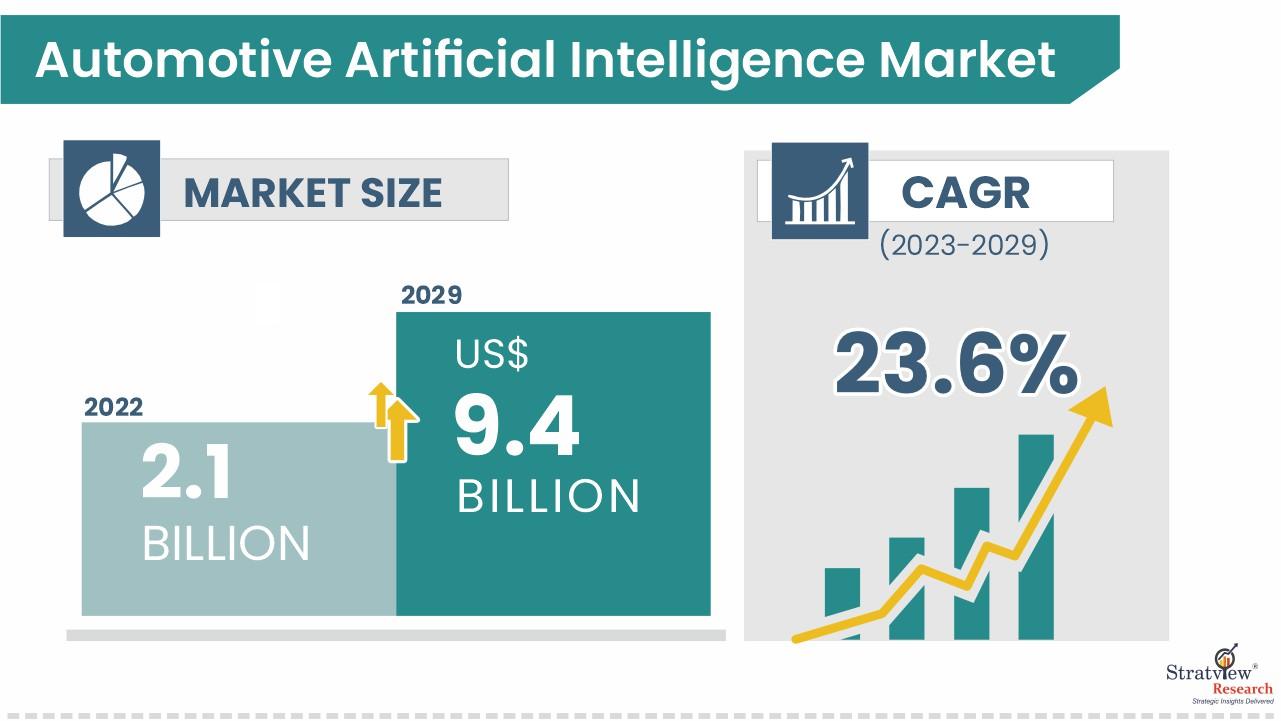The Role of AI in Enhancing Driver Assistance Systems

Artificial Intelligence is taking Advanced Driver Assistance Systems (ADAS) to the next level, improving driver safety, comfort, and overall vehicle performance. AI-enabled features like lane-keeping assist, automatic emergency braking, and adaptive cruise control are becoming standard in many modern vehicles, reducing human error and enhancing overall driving experience.
Stratview Research estimates the Automotive Artificial Intelligence Market will reach USD 9.4 billion by 2029, with ADAS playing a major role in driving this growth.
Request a sample report to preview our in-depth analysis:
How AI Enhances ADAS
- Real-Time Data Processing:
AI systems process data from multiple sensors such as cameras, radars, and LiDAR to provide real-time insights about the vehicle’s environment. This real-time data processing enables ADAS to react instantly to changing conditions and provide safety alerts to drivers. - Improved Object Detection and Collision Avoidance:
AI improves the accuracy of object detection and helps in making decisions regarding braking and steering. AI systems can predict the movement of pedestrians, other vehicles, and obstacles, preventing accidents in critical situations. - Driver Behavior Monitoring:
AI-enabled systems can monitor driver behavior to detect signs of fatigue, distraction, or unsafe driving patterns. These systems provide real-time alerts or recommendations, enhancing driver alertness and vehicle safety.
Market Drivers for AI in ADAS
- Increased Demand for Vehicle Safety Features:
Consumers and regulators are pushing for enhanced safety features in vehicles, driving the demand for AI-based ADAS. The integration of AI enables more accurate and reliable safety features compared to traditional systems. - Regulatory Mandates for Safety:
Governments around the world are enforcing regulations requiring the inclusion of safety features in vehicles. AI-powered systems help meet these requirements by providing automatic braking, lane-keeping assist, and collision detection.
Challenges in ADAS
- High Costs of AI Integration:
While AI-powered ADAS systems improve safety, the integration of these systems into vehicles can be expensive, especially for mass-market vehicles. - Data Privacy and Security:
ADAS relies on extensive data collection, which raises concerns about data privacy and the security of information. Ensuring secure data storage and secure communication between vehicle systems is a key challenge.
Conclusion
AI is enhancing Advanced Driver Assistance Systems by providing more accurate, real-time decision-making capabilities, improving vehicle safety and driver assistance. As the market for ADAS continues to expand, AI will be essential in creating safer, more efficient driving environments.
- Art
- Causes
- Crafts
- Dance
- Drinks
- Film
- Fitness
- Food
- Games
- Gardening
- Health
- Home
- Literature
- Music
- Networking
- Other
- Party
- Religion
- Shopping
- Sports
- Theater
- Wellness


